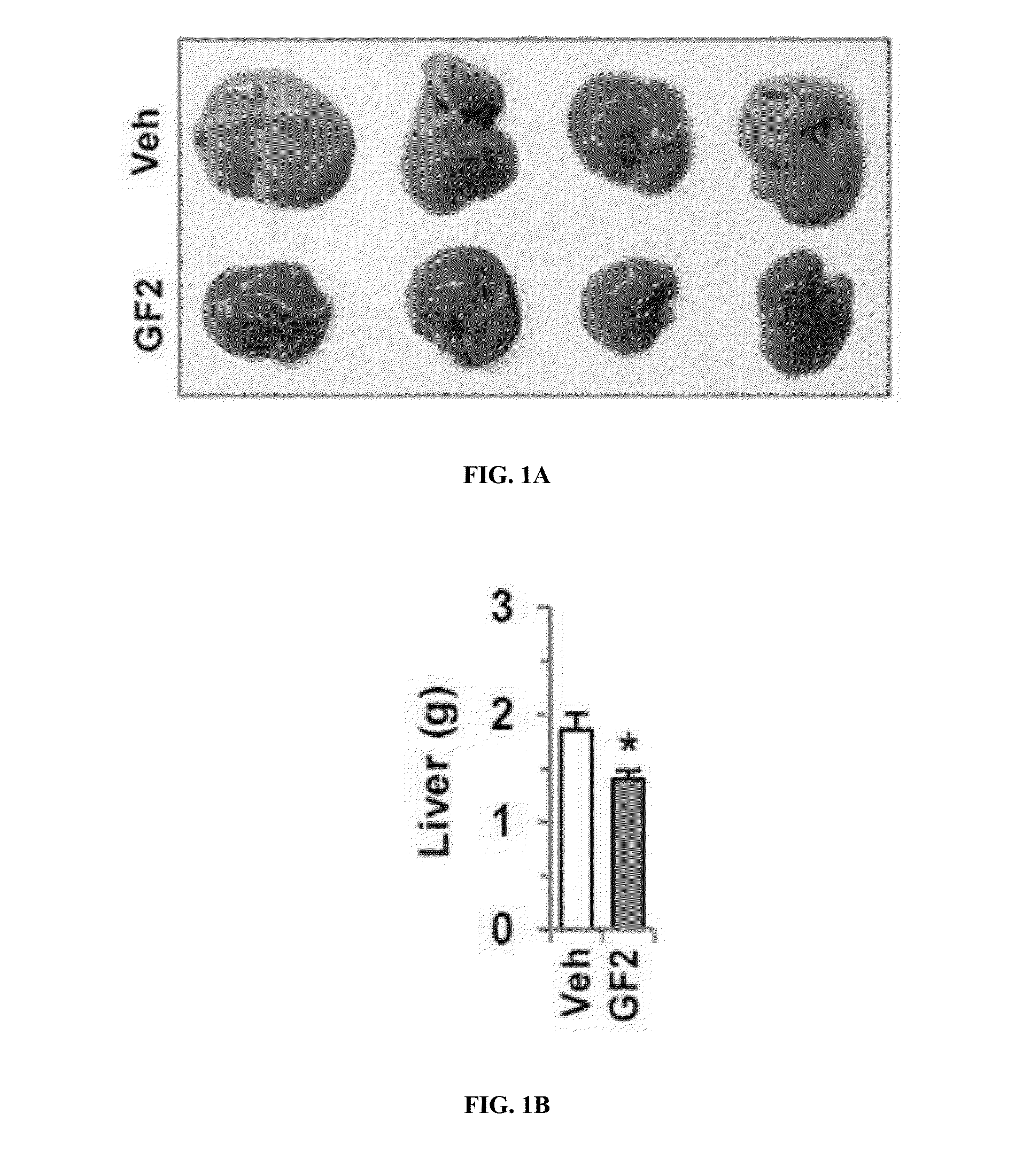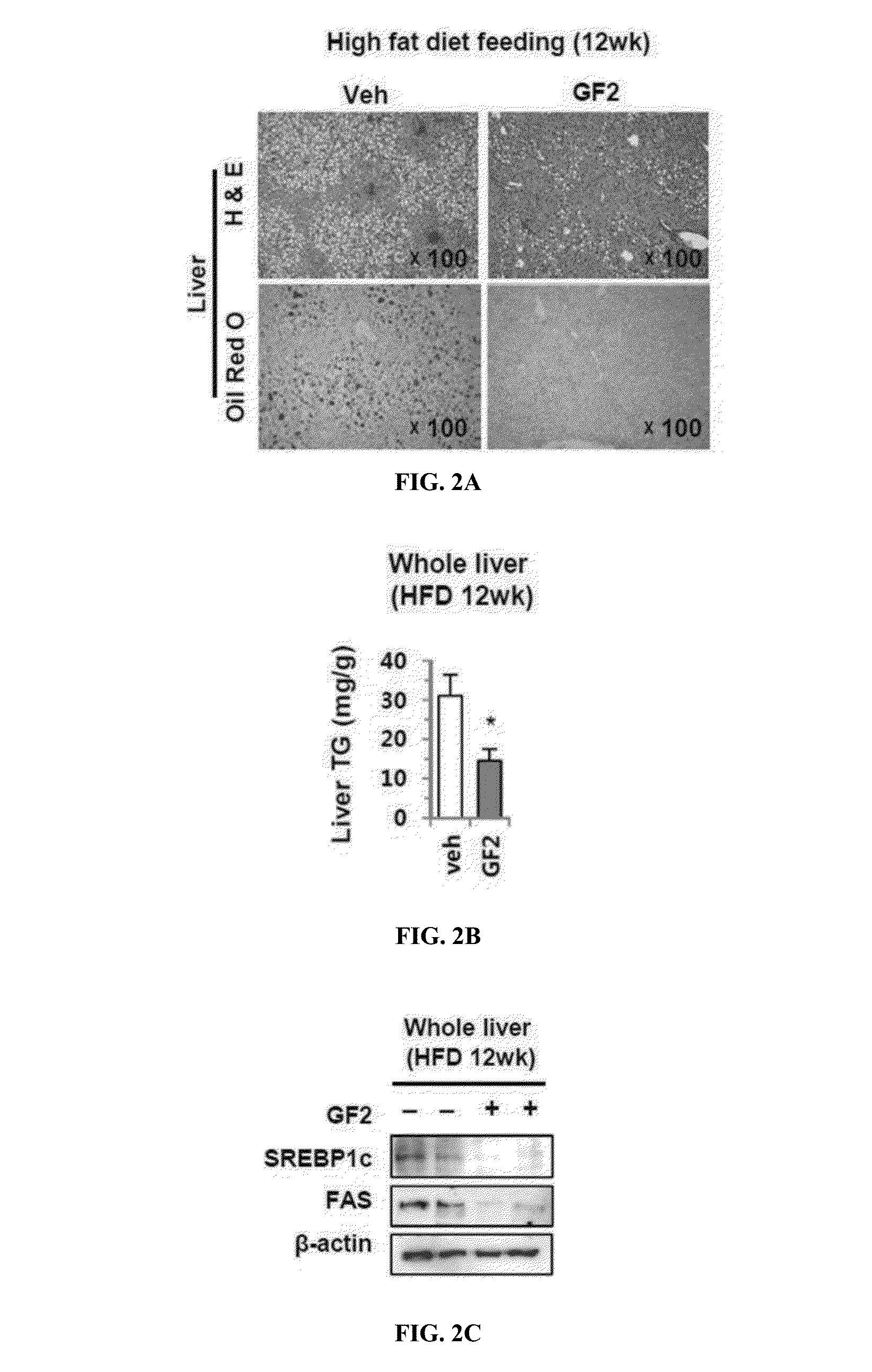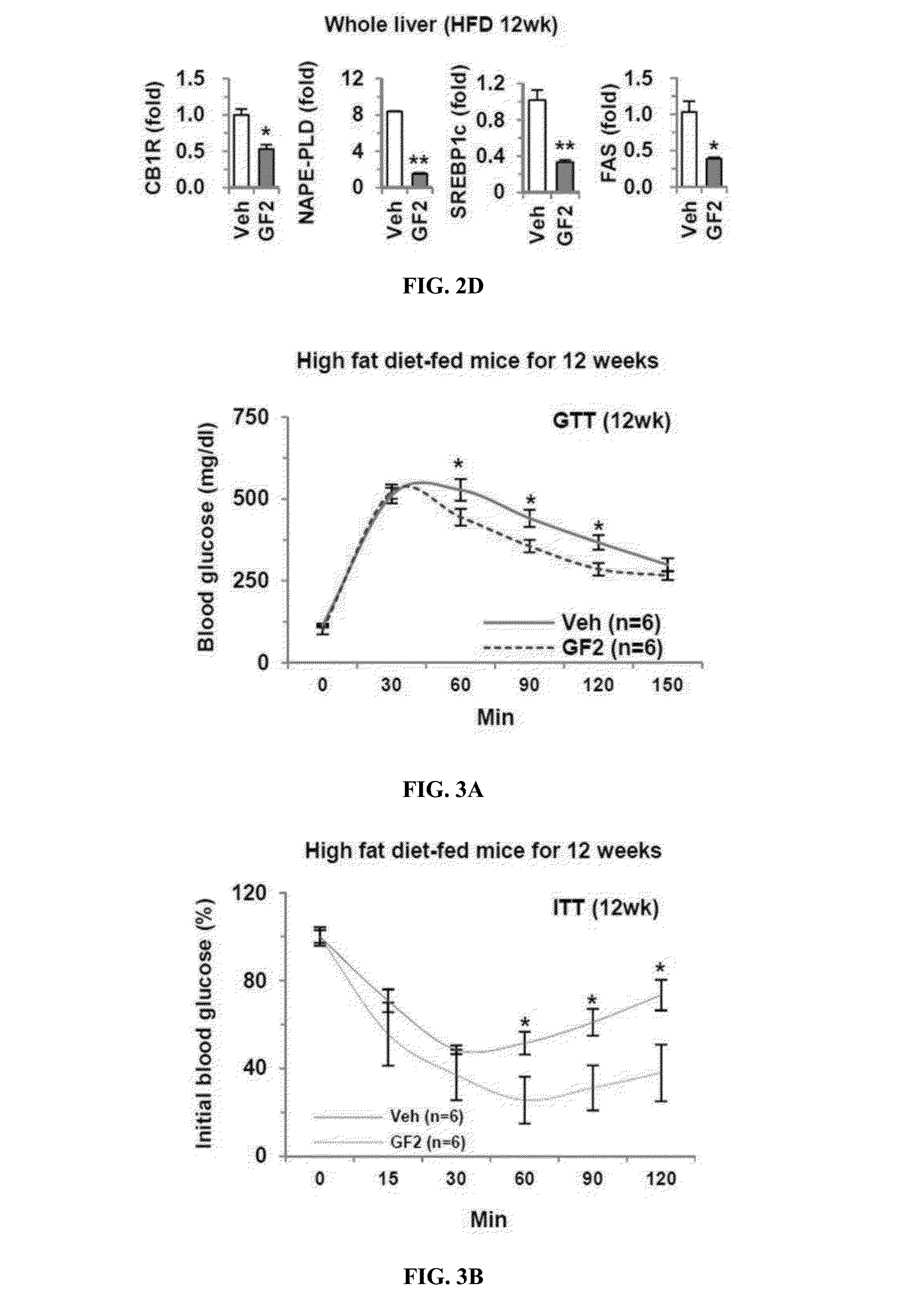Composition for preventing or treating non-alcoholic liver disease or insulin resistance comprising ginsenoside f2
a technology of ginsenoside and non-alcoholic liver disease, which is applied in the field of ginsenoside f2, can solve the problems of non-alcoholic liver disease, toxic, drug-induced, etc., and achieve the effects of inhibiting expression, preventing adipogenesis and lipid accumulation, and improving insulin sensitivity
- Summary
- Abstract
- Description
- Claims
- Application Information
AI Technical Summary
Benefits of technology
Problems solved by technology
Method used
Image
Examples
example 1
Preparation of Ginsenoside F2
[0062]The leaves and roots of various ginsengs including Panax ginseng, Panax quinquefolius, and Panax japonicum were extracted at least twice with 20 volumes of 80% ethanol and dried to obtain crude saponins. The crude saponins were again dissolved in water, adsorbed onto an HP-20 resin, and washed with 100% water to remove saccharides. Then, the resultant was subjected to primary washing using 40% ethanol to remove protopanaxatriol ginsenosides, i.e., Re and Rg1. Subsequently, the resultant was subjected to washing with 80% ethanol to elute protopanaxadiol ginsenosides, i.e., Rb1, Rb2, Rc, and Rd, which were then dried. The protopanaxadiol ginsenoside mixture was reacted as a substrate according to the method described in Korean Patent Application Publication No. 2013-0134930 to obtain at least 70% of ginsenoside F2. Thereafter, ginsenoside F2 to be used as a feed was adsorbed onto an ODS resin, and ethanol at an appropriate concentration was continuou...
example 2
Confirmation of the Effect of Alleviating Fatty Liver
[0063]The effect of ginsenoside F2 on alleviating fatty liver was confirmed using a mouse model fed with high fat diet. Eight-week-old male mouse (body weight; 25 g to 28 g) were orally fed with high fat diet and ginsenoside F2 (50 mg / kg) five days a week for a period of 12 weeks. As a result, the group fed with ginsenoside F2 showed a significant decrease in the size of liver (FIG. 1A) and the weight of liver (FIG. 1B), compared to that of the control group. From the results, it was confirmed that ginsenoside F2 has the effect of inhibiting fatty liver production in mice even when they were fed with high fat diet.
example 3
Analysis of Liver Tissues
[0064]Hematoxylin and Eosin (H&E) staining was performed for the observation of the changes in the liver tissues, and the triglycerides in hepatocytes were stained via Oil-red 0 staining, and the results are shown under ×100 magnification (FIG. 2A). As a result, it was confirmed again that the lipid accumulation in hepatocytes was reduced.
[0065]Additionally, it was confirmed that ginsenoside F2 treatment lowered the triglyceride level in the liver (FIG. 2B) and also reduced the levels of protein expression of SREBP1c and FAS, which are important factors involved in adipogenesis, and expression of CB1R, NAPE-PLD, SREBP1c, and FAS genes (FIGS. 2C and 2D). Accordingly, it was confirmed that ginsenoside F2 can effectively inhibit adipogenesis in the liver.
PUM
 Login to View More
Login to View More Abstract
Description
Claims
Application Information
 Login to View More
Login to View More - R&D
- Intellectual Property
- Life Sciences
- Materials
- Tech Scout
- Unparalleled Data Quality
- Higher Quality Content
- 60% Fewer Hallucinations
Browse by: Latest US Patents, China's latest patents, Technical Efficacy Thesaurus, Application Domain, Technology Topic, Popular Technical Reports.
© 2025 PatSnap. All rights reserved.Legal|Privacy policy|Modern Slavery Act Transparency Statement|Sitemap|About US| Contact US: help@patsnap.com



